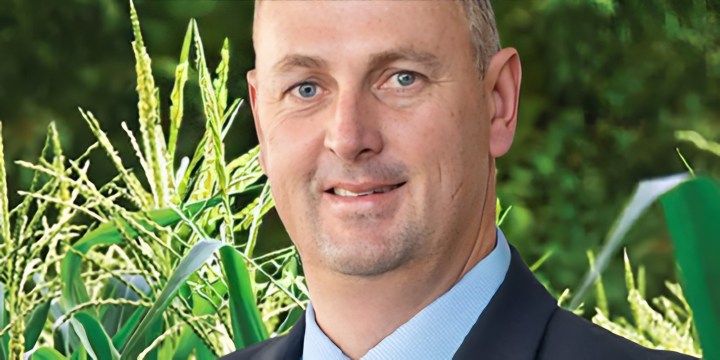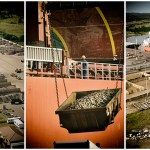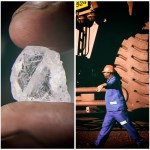DAILY MAVERICK INTERVIEW
Grain SA CEO: Poorly regulated coal mining is a threat to SA’s food security

South Africa’s coal mining sector, much of it opaque and shabbily regulated, is not just an environmental hazard. It is also a serious threat to food security as it mangles Mpumalanga maize fields, leaving a sterile landscape in its wake where even grass cannot grow.
“There are reasons why grain has been produced in certain areas in South Africa related to the climate, the topography and the access to markets. The coal mining is destroying that land, it is making it useless,” Pieter Taljaard, the CEO of industry group Grain SA, told Daily Maverick in an interview.
He was speaking on the sidelines of Grain SA’s annual Harvest Day and agricultural trade show at the sprawling Nampo grounds outside Bothaville in the northern Free State. Harvests across the grain belt have been stout in the past three years thanks to a La Niña weather pattern which has now ended.
But South Africa would produce even more summer grain crops if it were not for the coal sector.
“What the coal mines do is they take out the top fertile soil and then it gets mixed with all the rubble. Ideally, what you want is to put it back the same way, but now much of this fertile soil is lying too deep. Maize roots can only go two to 2½ metres deep,” Taljaard said. “In other countries, the rehabilitation is done properly and it’s done on time.”
So the root of the problem lies with the Department of Mineral Resources and Energy (DMRE), which has shown itself in recent years to be dysfunctional on a range of fronts.
Transparency void
We have previously reported on the scale of the carve-up of much of Mpumalanga for coal mining and related rights through the prism of a mapping initiative by the consultancy AmaranthCX, which seeks to fill the transparency void created by South Africa’s lack of a proper mining cadastre.
The map shows that most of the Mpumalanga Highveld — from the Gauteng border to Machadodorp — has been parcelled out for coal mining. It is a striking picture most South Africans are unaware of.
Minerals and Energy Minister Gwede Mantashe has signalled that his department will finalise the procurement process in July — after years of needless delays — for a functional mining cadastre, which should provide the public with easy online access to view the state of play of mining rights and allow companies to apply for such rights.
But much of the damage already inflicted by a poorly regulated coal sector, which is also beset by huge illegal mining operations, will not be undone.
“It’s a threat to food security in South Africa and has been for many years,” Taljaard said. “The land is not just useless for maize production; grass won’t grow as well.”
And Mpumalanga’s climate and soil are simply superior to what obtains to the west, meaning that South Africa’s most fertile grain lands — which feed the country — are being rendered infertile by the coal industry.
“Mpumalanga has better yields, it rains earlier in the season. The risk is way less there for farming because of the rainfall. The N1 is the dividing line between higher and lower rainfall. The further west you go from it the more the rainfall decreases,” Taljaard said.
Viewed from the vantage point of history, this contestation between maize and coal is not without its ironies.
Much of the historical market for South Africa’s commercial maize production has been the mining sector, which required a cheap source of calories to feed a migrant labour force that was ruthlessly exploited under colonialism and apartheid.
Now one arm of the mining industry stands accused of biting the hand that has long fed it. Coal is devouring the source of its caloric foundation, and the consequences will be felt well beyond the industry. DM
This story first appeared in our weekly Daily Maverick 168 newspaper, which is available countrywide for R29.




















One only has to visit Delmas and surrounds, a prime farming area of mega boere and many other maize and soya farming operations… the landscape is littered with open cast mines, some legal and others belonging to politically connected individuals and opportunists, all making hay while the poorly functioning DMRE shines down on them, rehabilitation is a joke, roads are potholed by huge volumes of coal trucks, sulphur from poorly regulated Eskom power stations rains down on the farmland… it is too late Jy